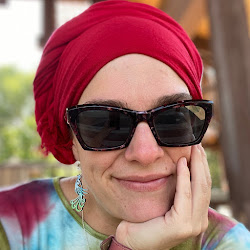Photo courtesy BrickTestament.com!
This week's parshah, Ki Tisa, is my favorite parshah (after only Lech Lecha, of course). I devoted half of my workload last semester to text from this portion, making it very near and dear to my heart. My time with this parshah is not up or over, and I intend on spending more time with it in the not-so-distant future. So I give you, an "abstract" of sorts from my paper, and if you're REALLY interested in what I have to say, you know, I can let you read the whole thing. I'll be presenting the paper (it's a more academic approach than a religious approach, but I think it's important for just about everyone to consider the text, the facts, the everything) at the end of next month at an SBL conference, too!
Exodus 32 and the Sin at Sinai: A Reconsideration of the Golden Calf
The incident of the sin at Sinai in Exodus 32 is known as one of the most divisive and difficult portions of Torah for complicated theological, historical, and textual reasons. In Jewish and scholarly circles, opinions vary on what the golden calf (עגל הזהב) was meant to represent – was it a replacement for Moses? Was it meant as a footstool for the presence of God? Or, perhaps most widely agreed upon, was the golden calf meant to be a replacement for God in the likeness of a pagan image? As a result, the discussion on Exodus 32 and the passages surrounding it expands into questions of motive, responsibility, authorship, purpose, and, ultimately, meaning. The golden calf incident and, subsequently, the research and composition of this paper, is significant in the sphere of Judaic scholarship, as the incident very early on became a divisive issue in Jewish and non-Jewish circles, representing the “original sin of the Israelite people.” Through an exploration of the peculiarities and hypotheses about the composition and purpose of Exodus 32, the archaeological evidence, and the varying accepted opinions on the role of the calf in the larger narrative, this paper focuses almost exclusively on the idol figure itself in order to recast the popular perception of the golden calf.The biggie? The difference between idol figures and idol objects. I know your salivating ...
An additional thought? I wrote about this a few years back during this portion, and since I've started donating daily, I think it's pretty appropriate for me to mention now, too. The parshah begins with a donation of a half-shekel by every individual older than 20 (a common belief is that religion is not suited for children, only adults can understand the depth and magnitude of religion and Torah). The donation is cited as "each shall pay," which in the Hebrew isv'nat'nu, or vav-nun-taph-nun-vav. Holy Moses! A palindrome! And a mighty important one (yet something else I probably wouldn't have gathered all on my own, amazing sages). Some have said that this suggests that charity is a two-way street. The Vilna Gaon says that this reminds us "that one who gives today may have to receive tomorrow."
So remember that, folks -- tzedakah is a two-way street. When I was a kid/teen and we ran into financial woes, we had to seek out help. There were very, very hard times. In college I had to seek help from a friend -- who obliged without even thinking about it -- and if he were ever to ask for help from me, if I were able to give it, I would. He who needs today might need tomorrow, so always give!






